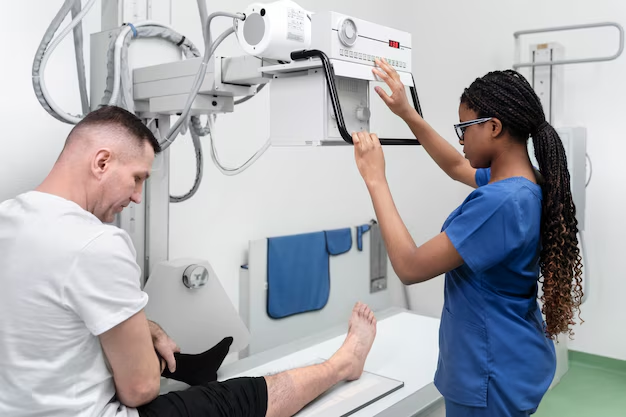Osteoporosis: How to Know if You Have It and What to Do Next
Navigating the complex world of health can be daunting, especially when faced with conditions like osteoporosis. With over 200 million people affected worldwide, understanding how to diagnose this "silent disease" is crucial for maintaining a healthy and active lifestyle. By the time significant symptoms, such as unexpected fractures, arise, the disease is already at an advanced stage. Here's how you can take proactive steps to assess your bone health.
Understanding Osteoporosis
Osteoporosis is a condition characterized by weakened bones, increasing the risk of sudden and unexpected fractures. It often progresses without any symptoms until a fracture occurs, typically in the hip, spine, or wrist. Early detection is vital for preventing these serious injuries.
Diagnostic Steps for Osteoporosis
1. Bone Density Test (DEXA Scan)
The Dual-energy X-ray absorptiometry (DEXA) scan is the gold standard for diagnosing osteoporosis. It measures bone mineral density (BMD), usually at the hip and spine, and compares it to the average peak BMD of a healthy young adult. The results are given as a T-score:
- Normal: T-score of -1.0 or above
- Low bone mass (osteopenia): T-score between -1.0 and -2.5
- Osteoporosis: T-score of -2.5 or below
2. FRAX Tool
The FRAX (Fracture Risk Assessment Tool) is used by healthcare providers to estimate your 10-year risk of developing a fracture. It considers various factors such as age, sex, weight, height, and previous fracture history, alongside your BMD.
3. Clinical Evaluation
Healthcare professionals will conduct a comprehensive medical history and physical exam. Factors such as family history, lifestyle (e.g., smoking, alcohol consumption), and dietary habits will be considered.
4. Blood and Urine Tests
These tests help rule out other conditions or deficiencies that might affect bone health. They include tests for calcium and vitamin D levels, and sometimes thyroid function tests.
What Happens Next?
If diagnosed with osteoporosis, a myriad of treatment options are available. Treatments range from medications that can slow bone loss or increase bone production, to lifestyle changes focusing on diet and exercise. However, managing osteoporosis can also entail financial challenges.
Financial Assistance and Support
Understanding the costs involved in managing osteoporosis, from diagnostic tests to treatments, is essential. Fortunately, there are options available to lessen the financial burden:
🩺 Health Insurance Programs: Most insurance plans cover osteoporosis diagnosis and treatments. Check if DEXA scans and medications are included in your plan.
💰 Government Aid:
- Medicare: Covers screening for women over 65 and younger women at high risk.
- Medicaid: Offers services in some states that might cover bone density scans and treatments.
🎓 Educational Grants: For students in healthcare fields, grants and scholarships can reduce educational debt, enabling you to focus more on wellness initiatives, including osteoporosis research.
💳 Credit Card Solutions: Some credit cards offer low-interest rates or healthcare financing options that can help manage out-of-pocket medical expenses.
Strengthening your bones not only involves understanding your diagnosis but also leveraging available resources for a healthier financial future. Early detection and proactive measures can help manage osteoporosis effectively, safeguarding your health and vitality.
Financial Assistance and Support Options 🎯
- Health Insurance Programs: 🩺 Coverage for diagnostic tests and treatments
- Government Aid:
- Medicare: 🏥 Coverage for eligible screenings
- Medicaid: 🚑 State-specific osteoporosis management
- Educational Grants: 🎓 Scholarships for healthcare students
- Credit Solutions: 💳 Low-interest healthcare financing options
By taking informed steps today, you can pave the way for improved bone health and financial stability.

Related Topics
- a Nurse Is Caring For a Client Who Has Osteoporosis.
- a Percutaneous Is Performed To Treat Osteoporosis Related Compression Fractures
- Can Alcohol Cause Osteoporosis
- Can I Do Pilates If I Have Osteoporosis
- Can I Reverse Osteoporosis
- Can Men Get Osteoporosis
- Can Osteoporosis Affect Teeth
- Can Osteoporosis Be Cured
- Can Osteoporosis Be Painful
- Can Osteoporosis Be Reversed